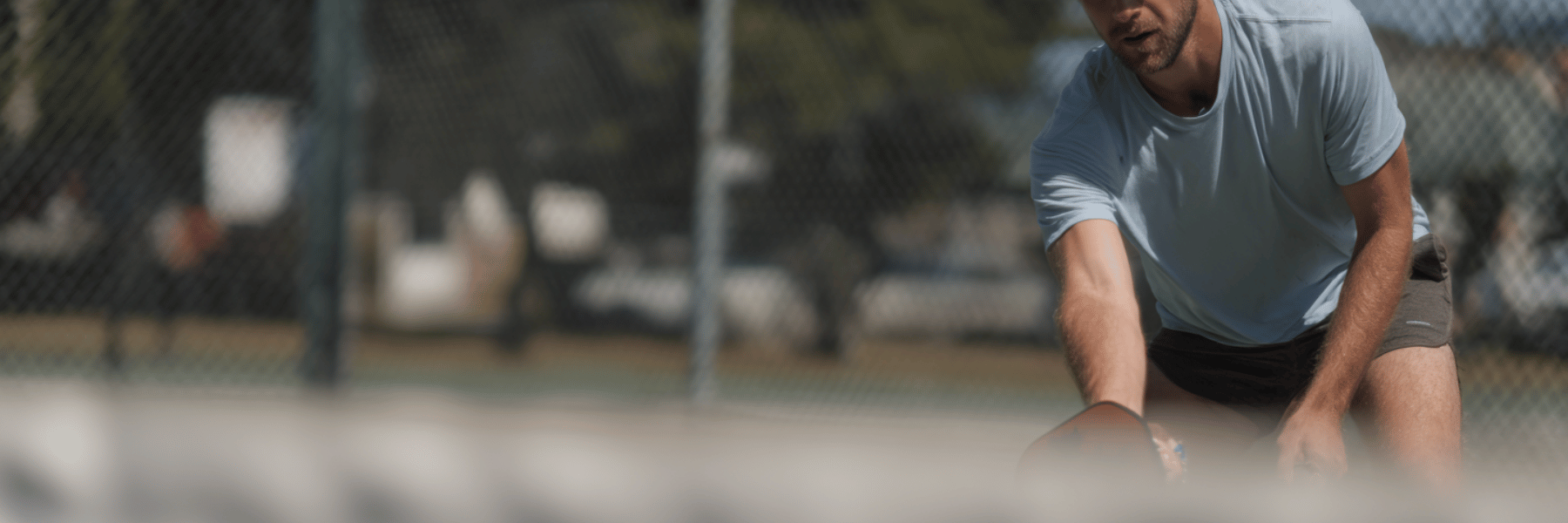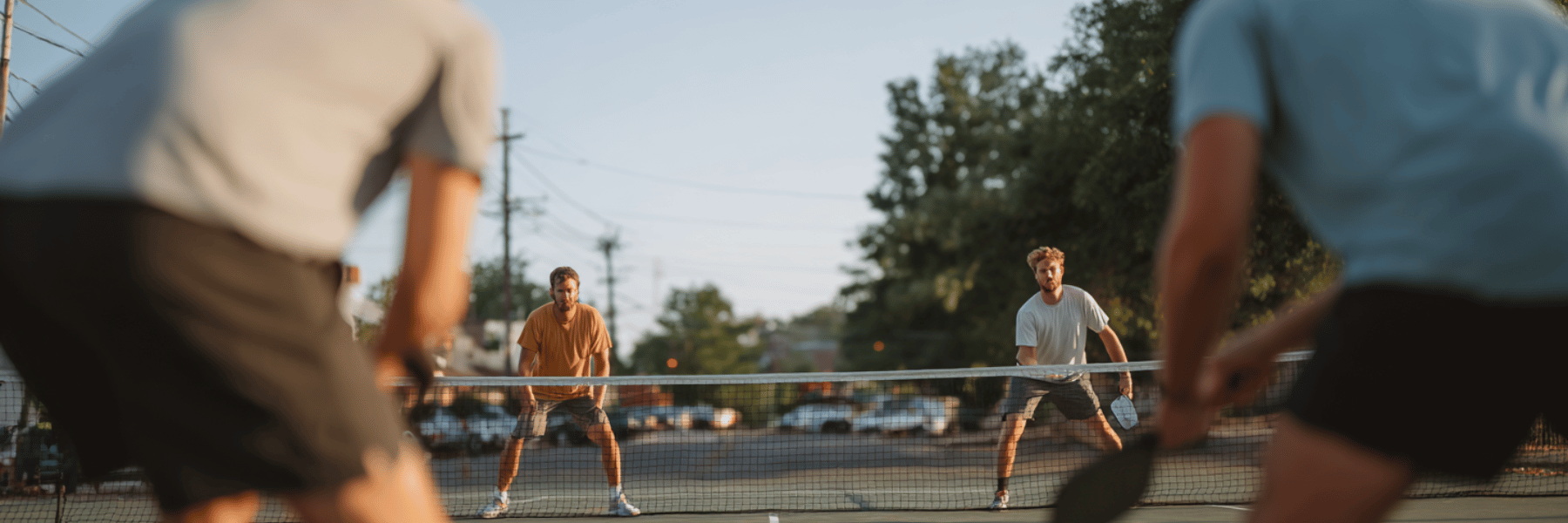What Is the Double Bounce Rule in Pickleball? A Complete Guide
The double bounce rule stands as one of pickleball's most fundamental regulations, yet many players find themselves confused about its proper application. Whether you're new to this exciting paddle sport or looking to refine your understanding of the basic rules, mastering the pickleball double bounce rule will dramatically improve your game strategy and court positioning. USA Pickleball calls this the two-bounce rule and lists it in Rule 7.A.
Understanding the Two Bounce Rule Basics
The two bounce rule in pickleball creates a unique dynamic that sets this sport apart from other racquet sports. Simply put, when the server serves, both the receiving team and the serving team must let the ball bounce once on their side before hitting it. This means the first two shots of every rally must be groundstrokes, not volleys.
Here's how the bounce rule works in sequence:
-
The server initiates play from behind the baseline
-
The receiving team must let the ball bounce before returning
-
The serving team must then allow the return to bounce before hitting their third shot
-
After these two bounces, players can volley or hit groundstrokes freely
Why the Double Bounce Rule Exists
The two bounce rule eliminates the serve and volley advantage that dominates many racquet sports. In tennis, aggressive servers can rush the net immediately, but pickleball's bounce rule prevents this tactic. This regulation ensures fairness between the serving team and receiving team, creating more strategic and engaging rallies.

The rule eliminates the serve and volley advantage and extends rallies, making pickleball more accessible to players of all skill levels. It's the only sport with this specific requirement, which contributes to pickleball's unique appeal and strategic depth.
How to Execute the Double Bounce Rule Properly
For the Serving Team
When you're on the serving team, remember that only the serving team can score points initially. The first server stands in the right side of the court when the serving team's score is even. After serving, you must stay back and wait for the return to bounce in your team's court before hitting your ground stroke.
The server continues serving until the serving team results in a fault. When this happens, the server switches sides with their partner, unless it's a first server exception situation where service passes to the opposing team.
For the Receiving Team
As part of the receiving team, position yourself to handle the serve effectively. You must must let it bounce before returning. If the serving team wins the rally, the two partners switch sides and the same server serves again from the left (odd) court. If the server commits a fault, service passes to their partner (except in the very first service turn of the game).
Common Double Bounce Rule Violations
Understanding rule violation scenarios helps you avoid costly mistakes. The most frequent errors include:
-
Volleying before the second bounce occurs
-
Rushing the non volley zone line too early
-
Confusion about when the bounce rule ends
-
Hitting the ball after it bounces twice on one side
Remember, if the ball bounces twice on the same side before paddle contact, it's a fault - not related to the two bounce rule. This is simply a basic rules overview pickleball fundamental that the ball to bounce only once per side during play.
Strategic Applications of the Two Bounce Rule
Third Shot Strategy
The double bounce rule creates the famous "third shot" opportunity. Since the serving team must stay back for the return bounce, they often hit a soft shot (drop shot) to advance toward the non volley zone. This strategic advantage for the receiving team balances the game, as they can establish net position first.
Positioning and Movement
Understanding the bounce rule in pickleball helps you anticipate court movement. The returning team can move forward after their return, while the serving doubles team must wait. This creates distinct positioning advantages that skilled players exploit throughout the service sequence.
Double Bounce Rule in Different Game Formats
Singles Play
In singles, the two bounce rule remains unchanged. The server stands on the appropriate side based on their score, serves to the opposite diagonal court, and both players must observe the two-bounce requirement. With only one partner to cover the court, positioning becomes even more critical.
Doubles Play
During doubles play, coordination between partners becomes essential. When team b receives, both players must understand who will return based on the serve direction. The first service sequence follows specific patterns, with the first server starting from the right court when their team's score is zero.
Official Rules and Tournament Play
According to official rules, the double bounce requirement applies universally in tournament play. Professional players have mastered using this rule to their advantage, often employing specific strategies based on whether they're serving or receiving. The server loses the point if they violate this rule, and line calls regarding bounces must be made clearly and honestly.

In tournament settings, the server continues switching sides after each point won, but the two bounce rule applies regardless of court position. The game continues with this pattern until one team reaches the winning score.
Under modern rules a serve that touches the net but lands in the correct box is in play; there is no second serve.
Tips for Mastering the Double Bounce Rule
To excel with the bounce rule, consider these strategies:
-
Practice patience - Don't rush forward until after the required bounces
-
Develop your groundstroke - Since you'll use it for the first two shots
-
Master the drop shot - Essential for the third shot after the bounces
-
Communicate with your partner - Especially important when team commits to specific strategies
-
Stay behind the baseline initially - Ensure you have at least one foot behind when serving
How the Rule Affects Scoring
Remember that in pickleball, only the serving team can score points. The two bounce rule impacts scoring strategy because it prevents immediate aggressive play. When the server initiates play, they must be patient through the bounce sequence before attempting to win the point.
During each serve attempt, the server gets one serve. If the ball touches the net but still lands in the correct service court, the ball remains live and play continues. The two‑bounce rule still applies.
Some sanctioned events now experiment with rally scoring, where either side can score, but traditional play still awards points only to the serving team.
Common Questions About the Double Bounce Rule
When Does the Rule End?
The bounce rule only applies to the first two shots after each serve. Once both teams have hit the ball after a bounce, regular play resumes. Players can then volley from anywhere except the non volley zone.
What Happens During Service Changes?
When service passes between teams or partners, the two bounce rule resets. Each new serve begins a fresh sequence where both teams must observe the bounce requirement. The next serve follows the same pattern, ensuring consistency throughout the pickleball game.
Are There Exceptions?
The only notable exception involves the first server exception rule at the game's start. When a new game begins, the starting team only gets one server (not two as in regular play). However, the double bounce rule still applies to every serve, including this initial service sequence.
Conclusion: Making the Double Bounce Rule Work for You
The what is the double bounce rule in pickleball question has a simple answer with profound strategic implications. This unique rule in pickleball creates the balanced, strategic gameplay that makes the sport so engaging. By forcing both teams to hit groundstrokes on the first two shots, it extends rallies and rewards patient, tactical play over pure power.
Whether you're playing singles or doubles, understanding and leveraging the two bounce rule will elevate your game. Focus on developing strong groundstrokes, mastering the third shot drop, and maintaining proper court position throughout the bounce sequence. With practice, you'll find that this one rule opens up countless strategic possibilities.
Ready to put your knowledge into practice? Grab your paddle, find a court, and experience how the double bounce rule transforms every rally into an exciting tactical exchange. And don't forget - proper footwear like quality pickleball socks from Monfoot Socks can help you maintain the quick footwork needed to excel at this dynamic sport!
